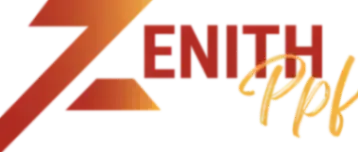What Is Paint Protection Film (PPF)?
What Is Paint Protection Film (PPF)?
Definition and Materials
Paint protection film (PPF) is a clear, thermoplastic urethane film applied to a vehicle’s painted surfaces. Unlike decorative vinyl wraps that change color or appearance, PPF is designed to be invisible. Its purpose is to protect the paint from chips, scratches, and environmental damage.
Modern films are made from multilayer urethane that combine impact resistance with optical clarity, ensuring the factory finish remains visible underneath.
The film includes a self-healing top coat that absorbs minor scratches and scuffs. When the surface is exposed to heat—either from the sun or warm water—the top coat reflows, causing shallow scratches to disappear. Beneath this layer is the urethane core that provides impact absorption. The adhesive layer bonds securely to the paint while allowing clean removal when it’s time to replace the film. Because the film is clear, it preserves the original color and texture of the paint, making it a preferred choice for vehicle owners who prioritize protection without dramatic aesthetic changes.
Benefits of PPF
PPF offers several advantages:
Protection from road debris – Gravel, sand, and small rocks are absorbed by the film instead of damaging the paint.
Resistance to contaminants – Bug splatter, bird droppings, and other corrosive elements can be wiped away without staining.
Preserves resale value – Factory paint remains pristine, helping vehicles command higher prices when sold.
UV resistance – Shields paint from fading and oxidation caused by the sun.
Long-lasting – Unlike waxes or sealants, PPF is built to last several years.
Invisible finish – Once installed, the film blends seamlessly with the paint, retaining the car’s original look.
Compatibility with ceramic coatings – A ceramic layer can be added on top for extra hydrophobicity and easier cleaning.
Comparison to Vinyl Wraps
While both PPF and vinyl wraps involve applying film to a vehicle’s exterior, their purposes differ:
Vinyl wraps – Change the car’s appearance with new colors, textures, or designs.
PPF – Provides protection, not decoration.
PPF is much thicker (6–8 mils) compared to vinyl (2–4 mils) and is engineered to absorb impacts. Vinyl is more conformable for extreme curves and graphics, whereas PPF focuses on durability and protection.
Some manufacturers now offer colored PPF, combining subtle style with protection. Many owners choose a hybrid approach: applying PPF to high-impact areas and a vinyl wrap elsewhere.
Longevity:
Vinyl wrap: 3–5 years.
PPF: 5–10 years with proper maintenance.
Applications and Coverage Options
PPF can be applied to various vehicle areas, including:
Front end – Hood, fenders, and bumper, which are most exposed to road debris.
Door edges and sills – Prevent chips and scratches from careless loading or other doors.
Full-body coverage – Maximum protection, uniform aging, and reduced risk of mismatched paint repairs.
Installers often use computer-cut film patterns based on the vehicle’s make, model, and trim for a precise fit. Custom cutting is also available for unique areas.
Whether you choose partial or full coverage, PPF is an excellent defense against daily wear and tear. With proper care, it keeps your vehicle looking new and helps protect your investment.
Learn more about PPF at Zenith PPF.
Maintenance of PPF and Costs
Maintaining PPF is simple:
Wash regularly with mild soap.
Use film-safe cleaners and microfiber towels.
Consider applying ceramic coating for added ease of cleaning and hydrophobic properties.
Costs:
Partial coverage (front end, high-impact areas) – Lower upfront cost, strong protection where needed.
Full-body PPF – Higher initial investment but maximizes protection and long-term value.
Compared to repainting or repairing chips, PPF often pays for itself over time.


